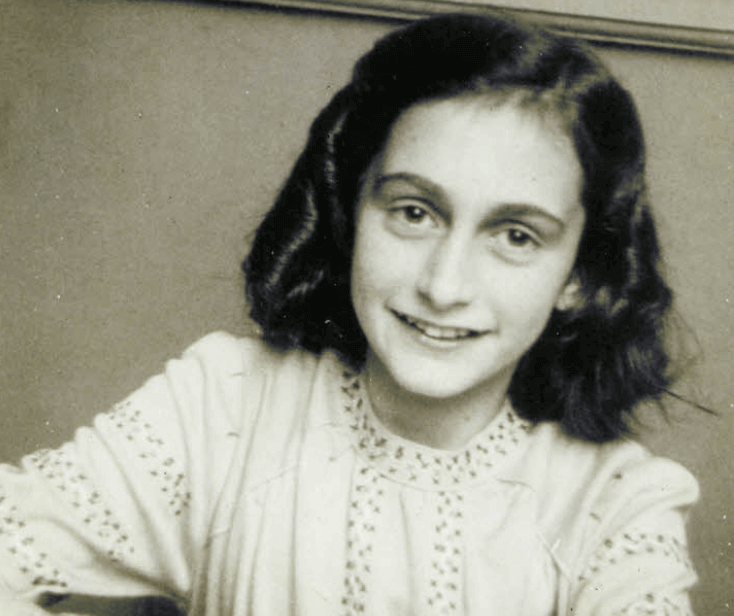Do you know Anne Frank’s biography? He always dreamed of becoming a journalist and then a great novelist, when he started writing his diary, he saw it as a project of the future, which would certainly come true after the war, when everything had returned to normal. as he had imagined, but ended up getting what he so desired.
Anne Frank’s diary is considered one of the most moving testimonies of all time, what makes it so special is the candor with which it was written and the innocence with which it describes the horror of war, and today it is one of the most read. books in the world and is listed in the “Memory of the World” register. Unesco.
- Anne Frank and her family had to hide in a small attic to escape the hatred of the Nazis.
- The isolation lasted just over two years.
- And during that time Ana wrote the diary.
- In which the life of a growing girl has been recorded with great charm and surrounded by a terrifying reality.
“As long as you can look up at heaven without fear, you will know that it is pure inside and that no matter what happens, you will be happy again. “Anne Frank?
First edition of Anne Frank’s Diary in 1955
Anne Frank was born on 12 June 1929 in Frankfurt-on-Main, Germany. His father, Otto Frank, served in the German army during World War I and won the rank of lieutenant, as well as an award for his merits: the Iron Cross. He then worked in a bank and, in 1925, married Edith Maellander. .
The couple had two daughters; Margot was born in 1926 and, three years later, Anne was born into a traditional upper-middle-class Jewish family.
When Hitler took power in Germany in 1933, he began the persecution of the Jews and the family decided to move to Amsterdam, Holland.
In his new home, Otto Frank opened a shop selling pectin and spices. Everything went well until 1942, when the Nazis invaded Holland and, as was customary, began “hunting” the Jews. The Dutch were the only Europeans to openly oppose this persecution, but their protests had little effect.
The situation of the Jews became increasingly tense and Otto Frank understood that the whole family was in great danger and that their capture was only a matter of time. Then, with the help of some collaborators of his work, he prepared a hideout in the same building where he had his shop.
There was another adjoining building, separated only by a courtyard, three floors and on the top floor a secret door leading to an attic, the access was hidden behind a bookshelf leading to stairs that, in turn, led to a Placita with two small bedrooms and a bathroom.
Otto told his wife and eldest daughter his plans, but Anne Frank didn’t know until it was time to hide. This happened on July 9, 1942, three days after Margot, the eldest daughter, received a notification that she should report. to the German authorities, which meant she would be arrested and deported.
Faced with this situation, Otto decided it was time for the family to hide, they had to leave the house at night wearing all the clothes they could wear, as it was very dangerous to carry suitcases, left their house in disarray and, on a casual note, suggested that they were fleeing to Switzerland. The plan was designed to work.
Statue of Anne Frank (Amsterdam)
For the next two years, the family lived in this shelter, where there was also another small family and a dentist. A total of eight people shared the stash. Anne Frank was able to describe each of them with great depth and talent, transforming them into literary characters.
The newspaper talks about their characteristics and the tensions overcome in the context of the precarious situation in which they lived, the refugees survived during this period with the help of their Dutch friends, who provided them with food and kept them informed. Anne thought of the world and fell in love for the first time.
It all ended on 4 August 1944, when, during a routine inspection, they were discovered by officials of the Dutch Gestapo, the refugees were sent to a concentration camp and the Frank family was separated to Auschwitz.
Eventually, Anne was left alone with her sister and both were sent to the Bergen-Belsen camp, where they died of typhus.
The only survivor was Otto, Anne Frank’s father, when he returned to hiding, looking for clues about his family, the Red Cross informed him of everyone’s deaths. Then they handed him Anne’s diary, which he didn’t know. I immediately learned that I was facing a document of great historical importance. Two years later, she manages to publish it and thus fulfills her daughter’s dream, who died at the age of 15.

